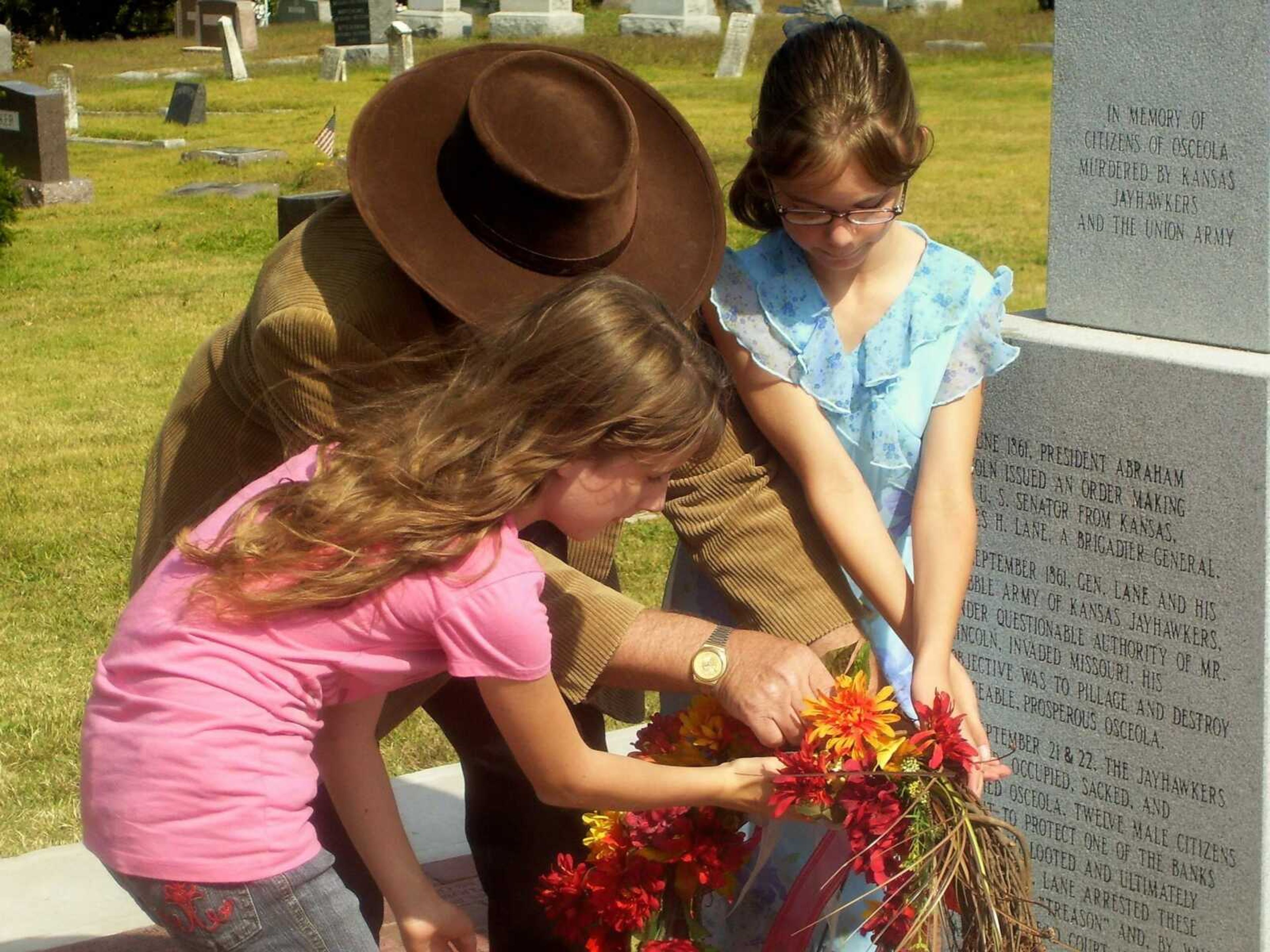October 11th Monument Dedication to Osceola Missouri's Murdered Citizens
On Saturday October 11th, 2008 an occasion transpired that was 147 years in the making. The John T. Coffee Camp #1934, Missouri Sons of Confederate Veterans in cooperation with the St. Clair County Missouri Historical Society dedicated a monument in honor of the twelve citizens of Osceola, Missouri who on September 21-22, 1861 sought to protect the town and its bank from Kansas Senator James Lane and his Kansas Jayhawkers...
On Saturday October 11th, 2008 an occasion transpired that was 147 years in the making.
The John T. Coffee Camp #1934, Missouri Sons of Confederate Veterans in cooperation with the St. Clair County Missouri Historical Society dedicated a monument in honor of the twelve citizens of Osceola, Missouri who on September 21-22, 1861 sought to protect the town and its bank from Kansas Senator James Lane and his Kansas Jayhawkers.
Unfortunately these twelve brave souls could not protect Osceola from Lane and his Jayhawkers and the town was captured, looted, robbed and torched by the Kansas invaders led by Lane.
The reward these citizens received for their effort was to be arrested by order of General Lane for treason and condemned to death by firing squad, of which Lane himself took part. Remarkably three of the twelve defenders survived, unbeknownst to General Lane.
Saturday, October 11, 2008 was a peaceful day, warm, breezy and quite. It was hard to believe looking at the surrounding countryside and the beautiful fall colors that it was the site of one of the worst war crimes in U.S. history.
A crowd of about 200 people (which included a Missouri state Representative) gathered at the Osceola cemetery to witness this historic event as Coffee Camp Commander Gary Ayres introduced Brother George Eberhardt who gave the invocation for the ceremony which focused on giving God thanks for our freedom.
Mrs. Joan McPeak, President of the St. Clair County Historical Society addressed the crowd and talked about how her ancestor was labeled a "disloyalist" by the federal government for refusing to give up his beliefs and convictions regarding the Constitution. Mrs. McPeak's ancestor was a judge.
Mr. Jay Jackson, Principal and Superintendent of Schools, Missouri City, Missouri next took to the podium and gave an historically accurate account surrounding the occupation and destruction of Osceola.
Jackson described the town prior to the War Between the States as one of the "fairest cities in Missouri" and that it was quite possibly the "third most important city in Missouri" prior its destruction by Lane and his invading Jayhawkers.
Jackson also spoke of the bitterness that followed the war, using fellow Missouri President Harry S. Truman's family history as an example. Truman had once written that he had came home in his blue National Guard uniform, and his grandmother ordered him to get out of the house. His grandmother, of course had witnessed the devastation caused by the Union Army and had not forgotten. Commander Ayers would later add that Truman was a member of the Sons of Confederate Veterans.
While Jackson's message was historically accurate, it was also tempered with a conciliatory air, and somewhat of a plea to let by bygones be bygones. He also mentioned that the monument was one of the first of its type to be dedicated within the borders of the Freedom's Frontier National Heritage Area which covers 41 eastern Kansas and western Missouri counties.
Although this might be true, the point must be made that the Freedom's Frontier National Heritage Area played no role in the events of this sacred day, though if they want to admit the war-crimes committed by Kansans during the war, I would call it a start.
That being said, I don't wish to focus on technicalities, because the important thing is that after 147 years, a monument has been dedicated to the civilians of Osceola, who tried to save "the fairest city in Missouri" and their story is finally being told.
I couldn't help but wonder later on in the day; What would Osceola look like today if it had not been burned to the ground? Looking at the Osage river , it's hard to believe that it was once navigated by steamboats or that Osceola was a port city.
Would Osceola have been a major port city today had it not been burned? Because of James Lane and his Kansans we will never know, but one thing that I know for sure is that the symbol of freedom can be envisioned by twelve heavily outnumbered Osceola citizens, who stared death in the face to protect their "fair city", this selfless act is symbolized on a stone monument located at the Osceola, Missouri cemetery where the spirit of freedom, honor and tranquility mingle with the falling autumn leaves passing as silently as the last 147 years.
- Deo Vindice
Clint E. Lacy
mobushwhacker@yahoo.com
Connect with the Southeast Missourian Newsroom:
For corrections to this story or other insights for the editor, click here. To submit a letter to the editor, click here. To learn about the Southeast Missourian’s AI Policy, click here.









